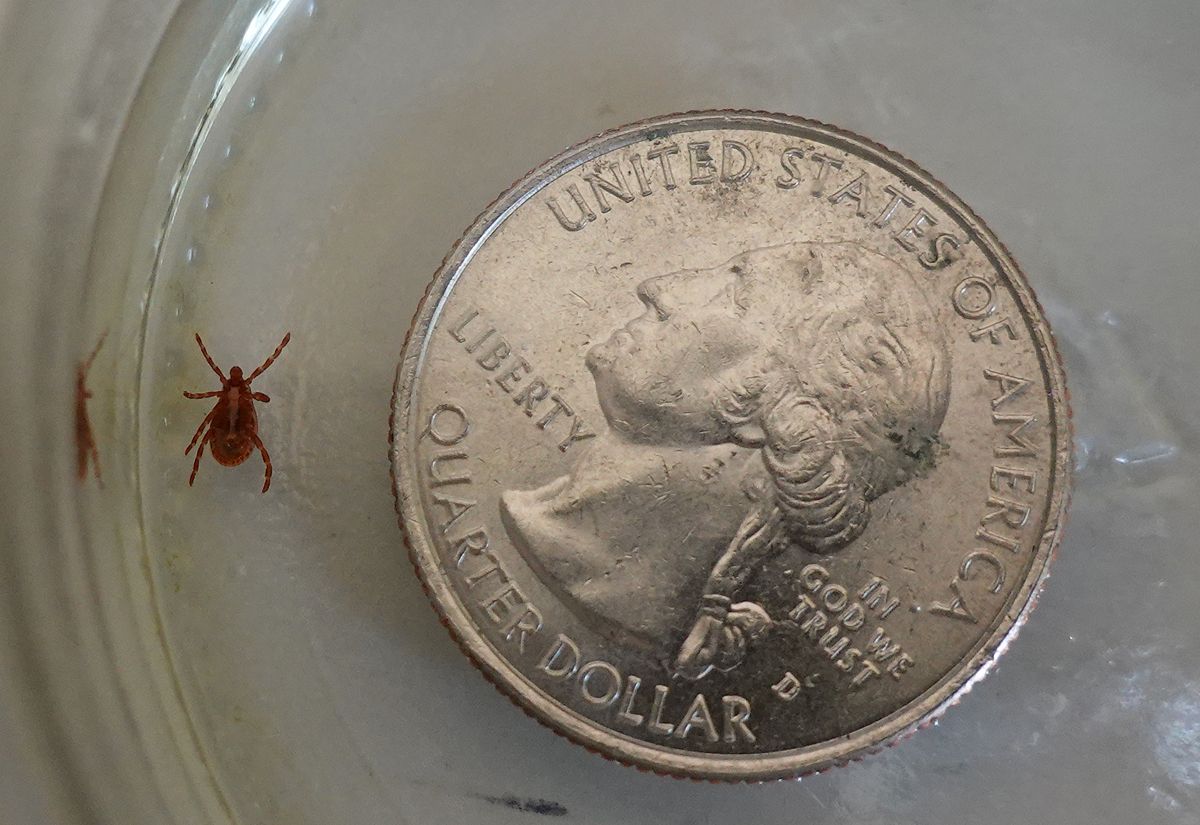A new tick on the block
As the climate warms, southern species that were formerly deterred by long cold winters are making their way north.

Just this morning, a resident gardening on Poor Farm Road picked up a tick — these days not an unusual occurrence at all. However, on close examination this one seemed different.
From the body shape — more pear-shaped than a wood tick (also known as a dog tick) — and the different markings, it closely resembles the species with the common name brown dog tick.
The University of Rhode Island has an informative and well-illustrated web page about ticks, including the brown dog tick. They are distributed world-wide and are more common in the southern US where they “occur predominantly in and around human settlements and infest homes, animal pens, and dog kennels, often causing high levels of infestation both on dogs and in homes. … All life stages of this tick can transmit Rocky Mountain Spotted Fever rickettsia (Rickettsia rickettsia) to dogs and rarely to humans. Both nymphal and adult stages can transmit the agents of canine ehrlichiosis (Ehrlichia canis) and canine babesiosis (Babesia canis vogeli and Babesia gibsoni-like) to dogs.”
As the climate warms, southern species that were formerly deterred by long cold winters are making their way north — for instance, tufted titmouse, red-bellied woodpecker, and the “stinky” giant swallowtail butterfly. This tick is a less-welcome harbinger of that trend.
Photo credit: Li Shen
